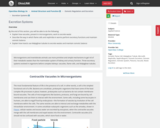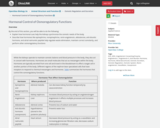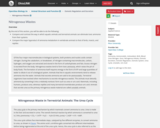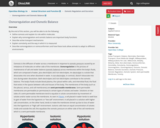
- Material Type:
- Full Course
- Provider:
- Rice University
- Provider Set:
- OpenStax College
- Date Added:
- 03/07/2018



By the end of this section, you will be able to do the following:
Explain how vacuoles, present in microorganisms, work to excrete waste
Describe the way in which flame cells and nephridia in worms perform excretory functions and maintain osmotic balance
Explain how insects use Malpighian tubules to excrete wastes and maintain osmotic balance

By the end of this section, you will be able to do the following:
Explain how hormonal cues help the kidneys synchronize the osmotic needs of the body
Describe how hormones like epinephrine, norepinephrine, renin-angiotensin, aldosterone, anti-diuretic hormone, and atrial natriuretic peptide help regulate waste elimination, maintain correct osmolarity, and perform other osmoregulatory functions

By the end of this section, you will be able to do the following:
Compare and contrast the way in which aquatic animals and terrestrial animals can eliminate toxic ammonia from their systems
Compare the major byproduct of ammonia metabolism in vertebrate animals to that of birds, insects, and reptiles

By the end of this section, you will be able to do the following:
Define osmosis and explain its role within molecules
Explain why osmoregulation and osmotic balance are important body functions
Describe active transport mechanisms
Explain osmolarity and the way in which it is measured
Describe osmoregulators or osmoconformers and how these tools allow animals to adapt to different environments

By the end of this section, you will be able to do the following:
Explain how the kidneys serve as the main osmoregulatory organs in mammalian systems
Describe the structure of the kidneys and the functions of the parts of the kidney
Describe how the nephron is the functional unit of the kidney and explain how it actively filters blood and generates urine
Detail the three steps in the formation of urine: glomerular filtration, tubular reabsorption, and tubular secretion